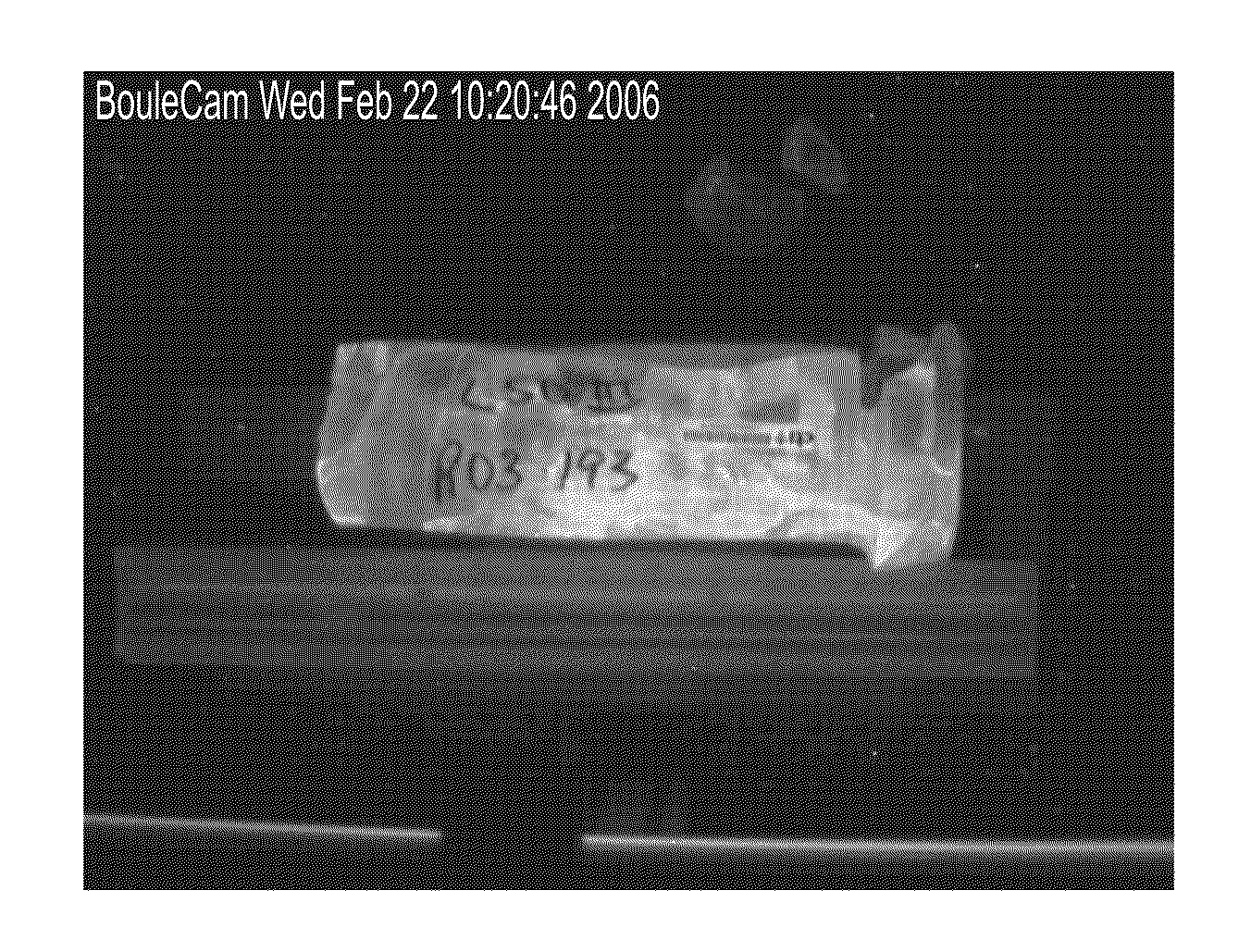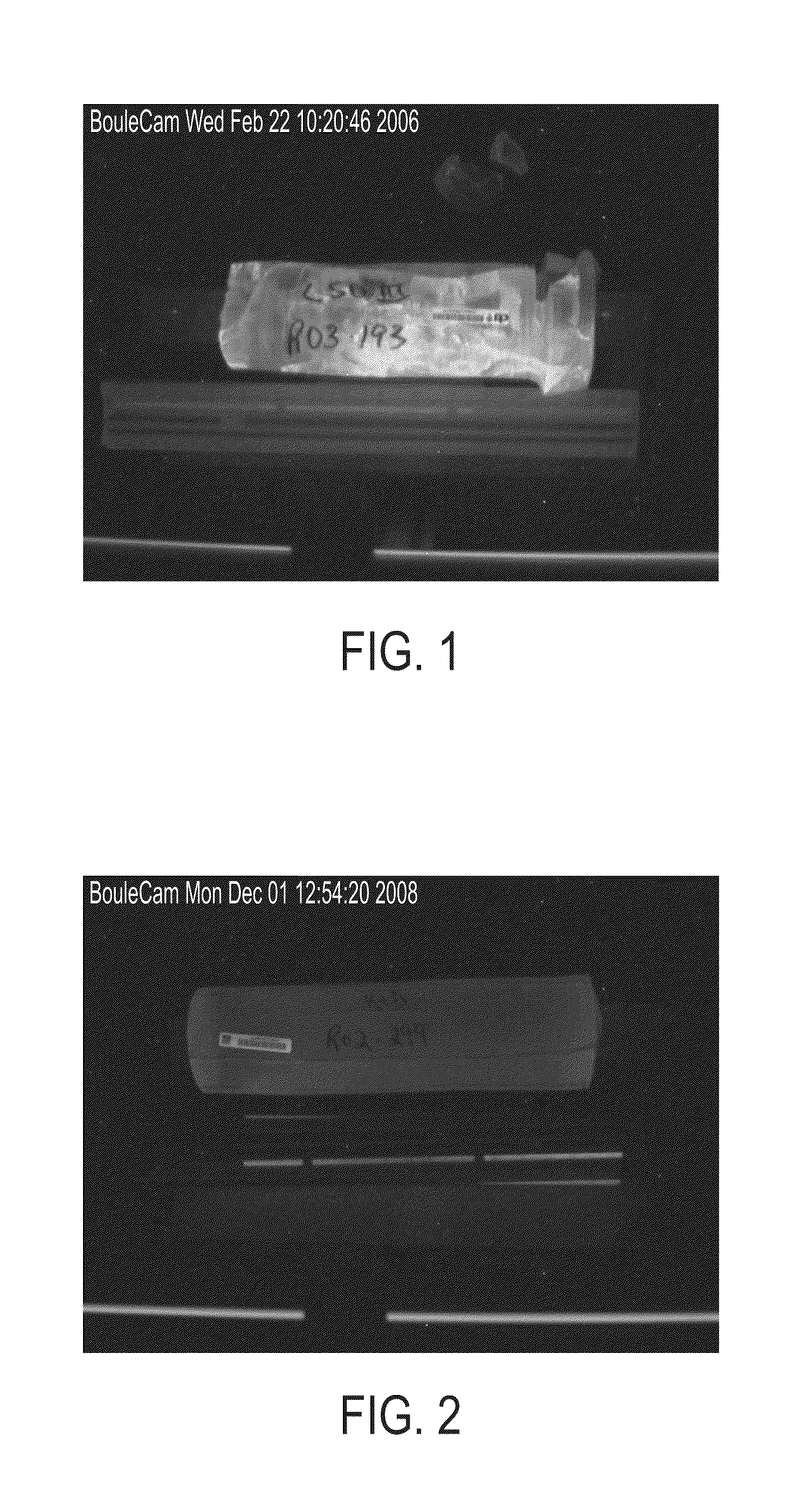Rare-earth oxyorthosilicate scintillator crystals and method of making rare-earth oxyorthosilicate scintillator crystals
a technology of rare earth oxyorthosilicate and scintillator crystals, which is applied in the direction of crystal growth process, crystal growth process, polycrystalline material growth, etc., can solve the problems of significant influence on the size and quality of grown crystals, and achieve short decay time, improved light yield and uniformity, and high light yield
- Summary
- Abstract
- Description
- Claims
- Application Information
AI Technical Summary
Benefits of technology
Problems solved by technology
Method used
Image
Examples
examples 1-12
[0036]LSO scintillator crystals were grown using the well-known Czochralski process (cited above). Starting materials Lu2O3, SiO2, CeO2, ZnO, CaO, MgO, SrCO3, Y2O3 were at least 99.99% pure. Nominal concentrations of codopants in the melt were adjusted according to codoping schemes 1-3 discussed above. The actual concentration of codopants in the crystal may differ from the concentration in the melt due to the solid-liquid segregation and the fraction of the melt solidified. The crystals were grown with pull rate ˜3 mm per hour, with a rotation rate 1 rpm. The growth atmosphere composition during crystal growth and cooldown was maintained constant with approximately one percent of oxygen in bulk nitrogen. The crystals were grown to about 80 mm in diameter and about 240 mm in length. The slabs had 20 mm in thickness and were cut and numbered, starting from the bottom section of the crystal boule. Light output measurements were done under excitation with Cs137 gamma source (662 keV). ...
example 1
[0037]FIG. 1 shows a LSO crystal boule with high concentrations of 0.1% Ce and 0.05% Ca. Crystal growth instability problems occurred during growth process. This crystal was grown using the art of Spurrier (U.S. patent application Ser. No. 11 / 842,813) applied to a commercial size LSO boule.
example 2
[0038]FIG. 2 shows a LSO crystal boule with Ce and Ca with appropriate adjustments of cerium and calcium concentrations according to scheme 2. The commercial size crystal boule was grown under stable growth conditions, with 0.025% Ce and 0.1% Ca, respectively.
[0039]In example 1 cerium concentration is relatively high, calcium content is a factor of 2 lower than cerium. However, a combined effect of Ce and Ca introduces instabilities in crystal-melt interface causing severe crystal cracking and loss of control over the crystal growth process. In the example 2, Ce concentration is 4 times lower, and calcium concentration is 2 times higher than in the example 1. However, combined effect of Ce and Ca does not affect crystal growth stability. Higher concentration of Ca over Ce is necessary to achieve scintillation time profile that is favorable for application in TOF PET.
PUM
| Property | Measurement | Unit |
|---|---|---|
| fluorescence decay time | aaaaa | aaaaa |
| fluorescence decay time | aaaaa | aaaaa |
| decay time | aaaaa | aaaaa |
Abstract
Description
Claims
Application Information
 Login to View More
Login to View More - R&D
- Intellectual Property
- Life Sciences
- Materials
- Tech Scout
- Unparalleled Data Quality
- Higher Quality Content
- 60% Fewer Hallucinations
Browse by: Latest US Patents, China's latest patents, Technical Efficacy Thesaurus, Application Domain, Technology Topic, Popular Technical Reports.
© 2025 PatSnap. All rights reserved.Legal|Privacy policy|Modern Slavery Act Transparency Statement|Sitemap|About US| Contact US: help@patsnap.com


